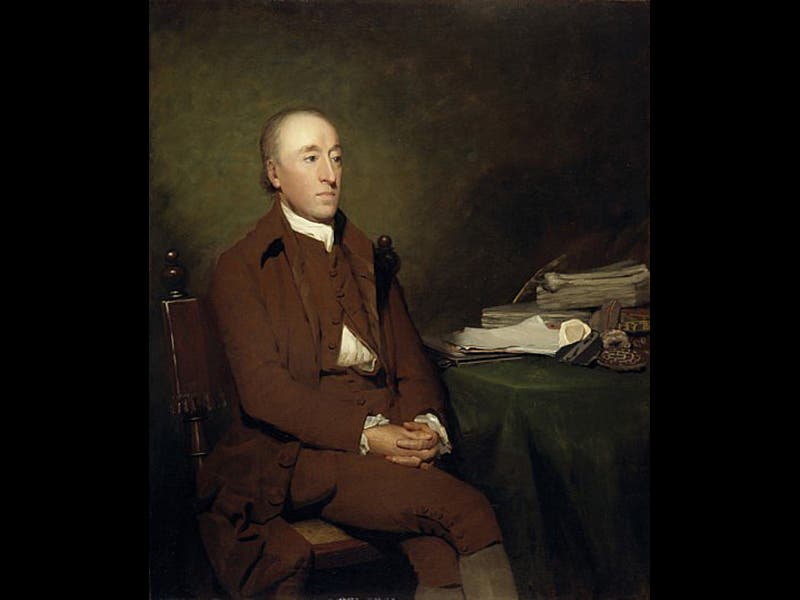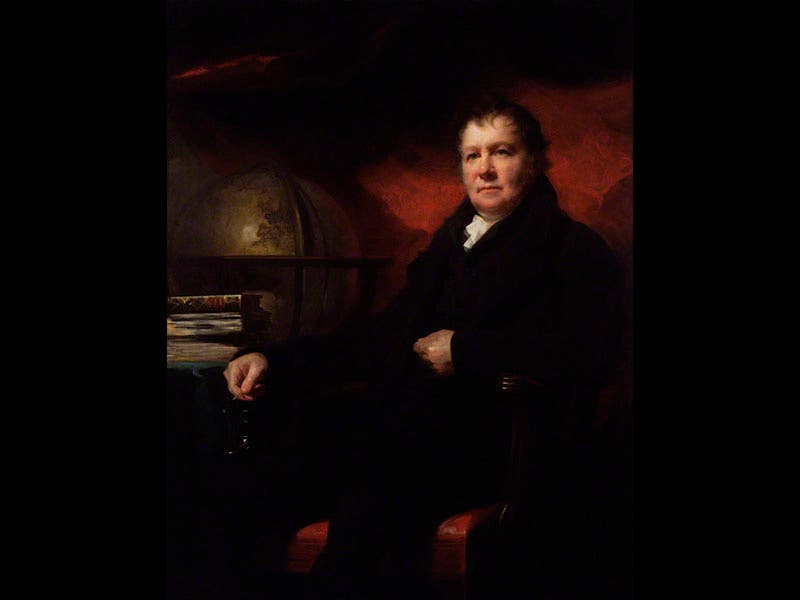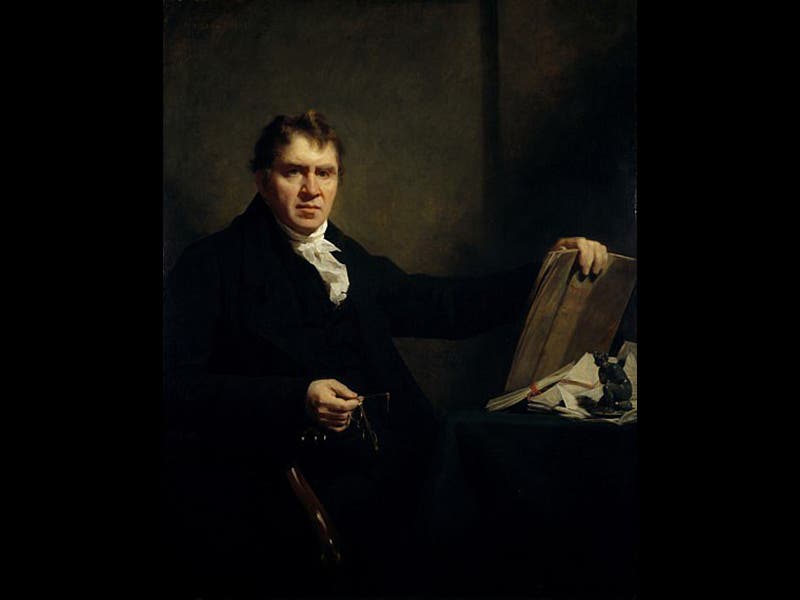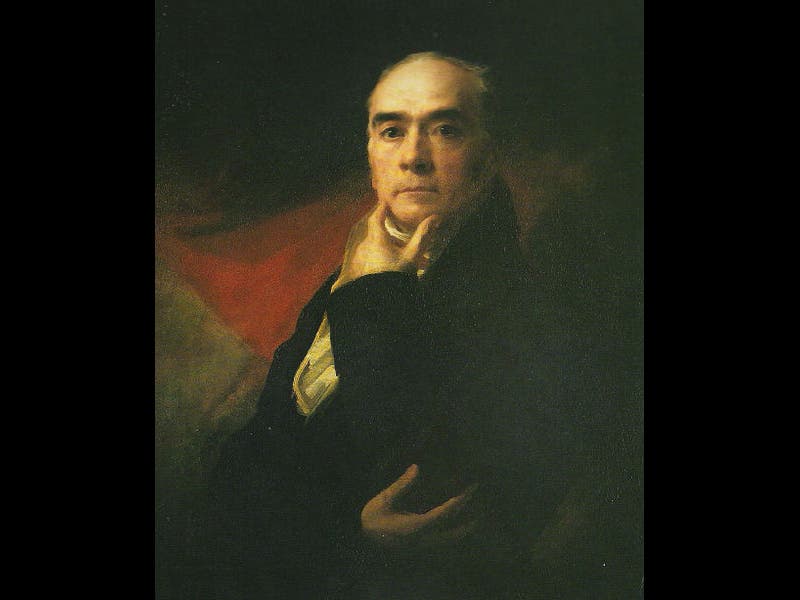Scientist of the Day - Henry Raeburn
Henry Raeburn, a Scottish painter, was born Mar. 4, 1756. Growing up in Edinburgh, Raeburn was a self-taught portrait artist. After spending two years in Italy emulating Michelangelo, he returned to his native city and hardly ever left it. Most painters as gifted as Raeburn seemed to end up in London; perhaps his decision to stay in Edinburgh enabled him to carve out a substantial niche there. He painted dozens of famous Scotsmen and women over a career of 45 years. Perhaps his most famous portrait is that of Sir Walter Scott, executed in 1822, just days before the artist’s death (first image above).
So what is a Scottish portraitist doing in a scientific anniversary? It happens that Raeburn painted more famous scientists than nearly any other artist we can think of. For example, one of Scotland's most distinguished geologists was James Hutton, who proposed around 1785 that the earth's crust formed very slowly, over long periods of time, going through a nearly endless cycle of erosion and uplift. Hutton came to Edinburgh after a life of farming and met the likes of Joseph Black, the great chemist and authority on heat. Hutton published his Theory of the Earth in 1795, illustrated by his friend, John Clerk of Eldin. After Hutton's death, his geological views were promoted by another Scottish friend, John Playfair. And if I wanted to tell this story with images, I would be in good stead, for Raeburn painted Hutton (second image), Playfair (third image), and Black (fourth image; only the engraving made from Raeburn’s portrait is available). Raeburn didn't paint Hutton’s friend, John Clerk the artist, but he did paint his son, John Clerk the judge, and since the son was a dead ringer for his Dad, our portrait gallery is nearly complete (fifth image).
Portrait artists are greatly under-appreciated by historians of science. We take it for granted not only that we will have portraits to illustrate our narratives, but that these portraits will be informed and character-rich. Had Raeburn chosen to move to London, the history of geology would not be nearly as interesting. And thank you, Henry Raeburn, for painting your own self-portrait, so that we can complete our pictorial narrative (sixth image).
Dr. William B. Ashworth, Jr., Consultant for the History of Science, Linda Hall Library and Associate Professor, Department of History, University of Missouri-Kansas City












